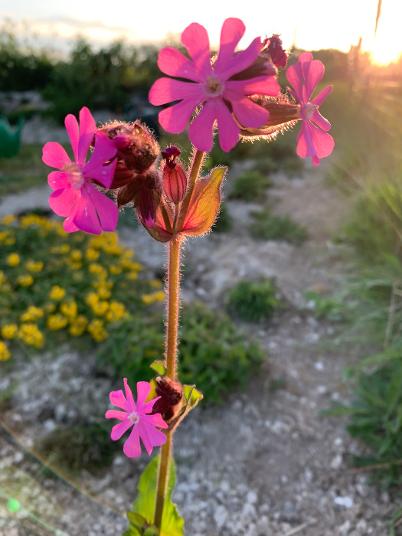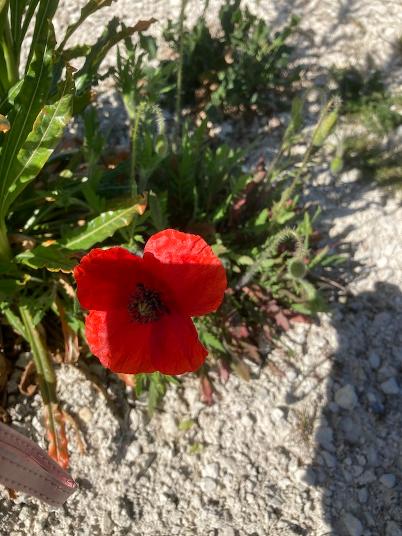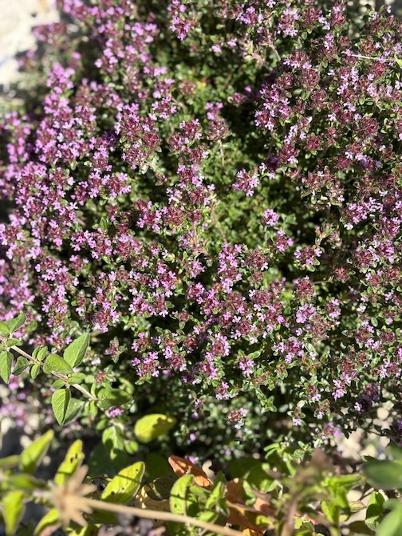Clusters of small purple flowers which open from reddish buds. The Marbled White butterfly is particularly drawn to Wild Marjoram. The herb also has culinary uses.
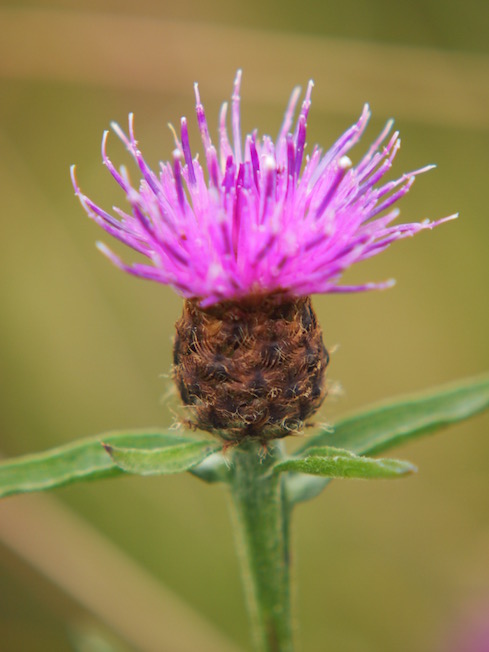
Large reddish-purple flowers (up to 5cm across) and attract bees, butterflies, hover flies and goldfinches.
Wild Basil (Clinopodium vulgare)
Pinkish purple flowers in late summer. It has culinary uses and is also used in herbal medicine. It is great for bees and butterflies.
Common Vervain (Verbenia officinalis)
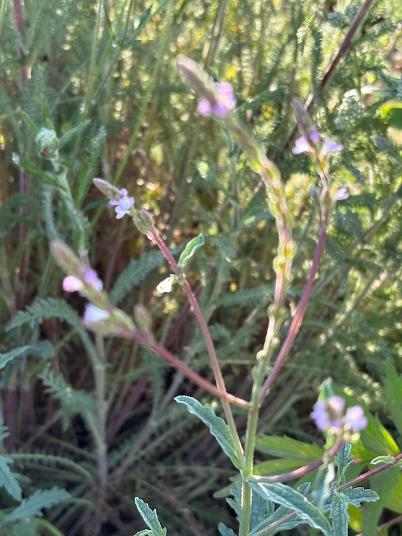
In late summer produces tall spikes with numerous delicate tiny pale purple flowers.
Saw-Wort (Serriatula tinctoria)
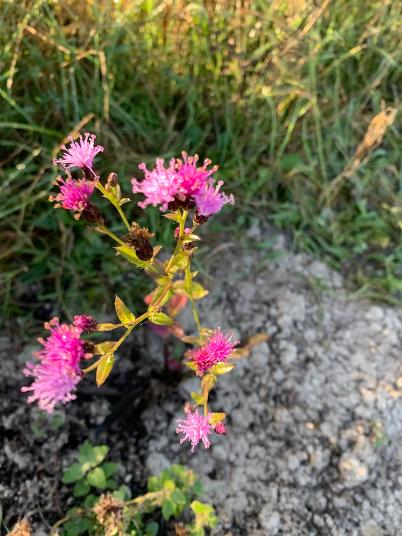
Thistle-shaped uneven flower heads of smallish mauve purple are borne in late summer.
Salad Burnet (Sanguisorba minor)
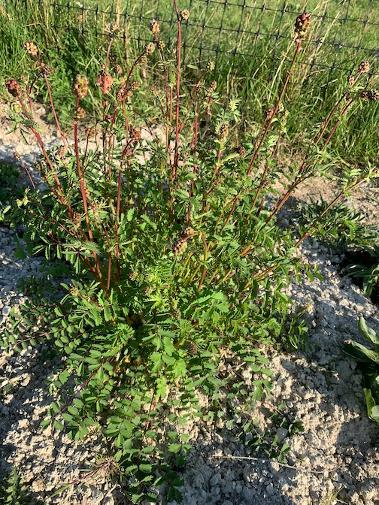
The pretty leaves are edible with a cucumber like flavour and are a food plant for the caterpillars of the Grizzled Skipper butterfly. The flowers are a dark brownish red.
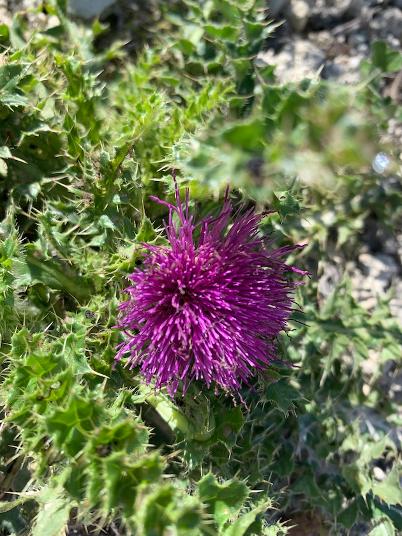
Red Kidney Vetch (Anthyllis vulneraria var.coccinea)
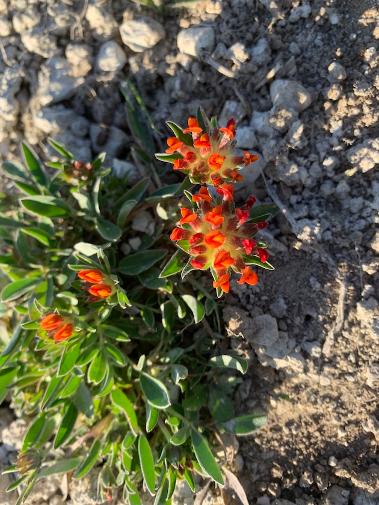
A variant of the more common Yellow Kidney Vetch. We hope the small blue butterfly caterpillar will also like this variant.
(Improved photo to come when more flowers open.)
Wild Pansy (Viola tricolor)
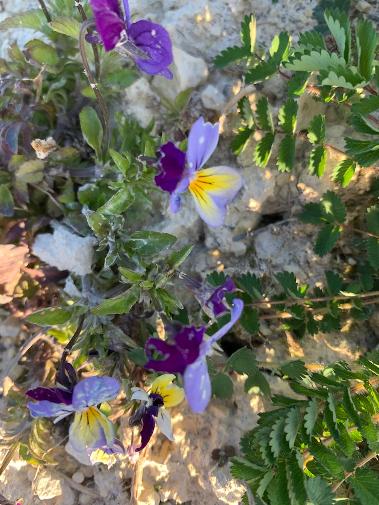
Multi-coloured blooms from spring to autumn. Dark purple upper petals, pale purple or pale-yellow middle petals and a dark yellow lower petal with dark streaks.
